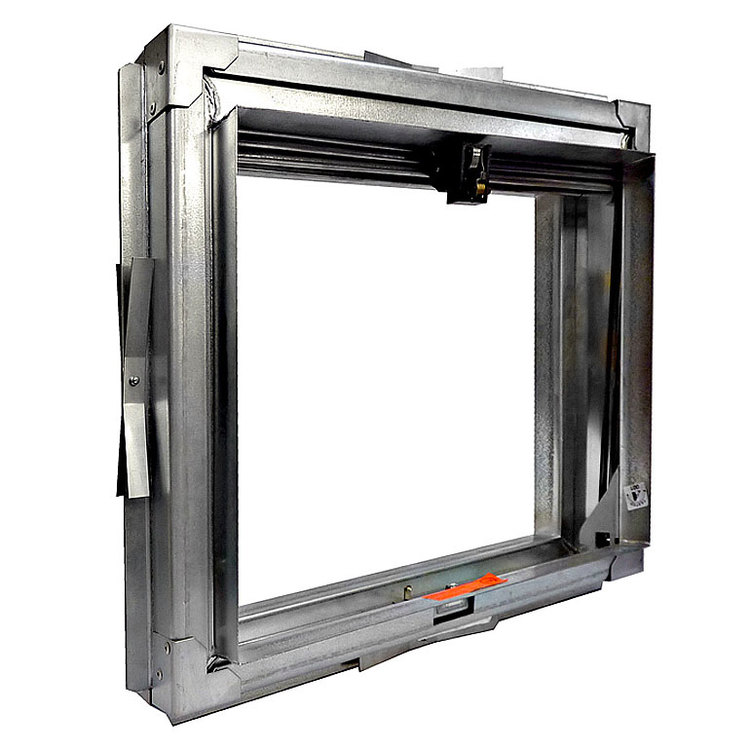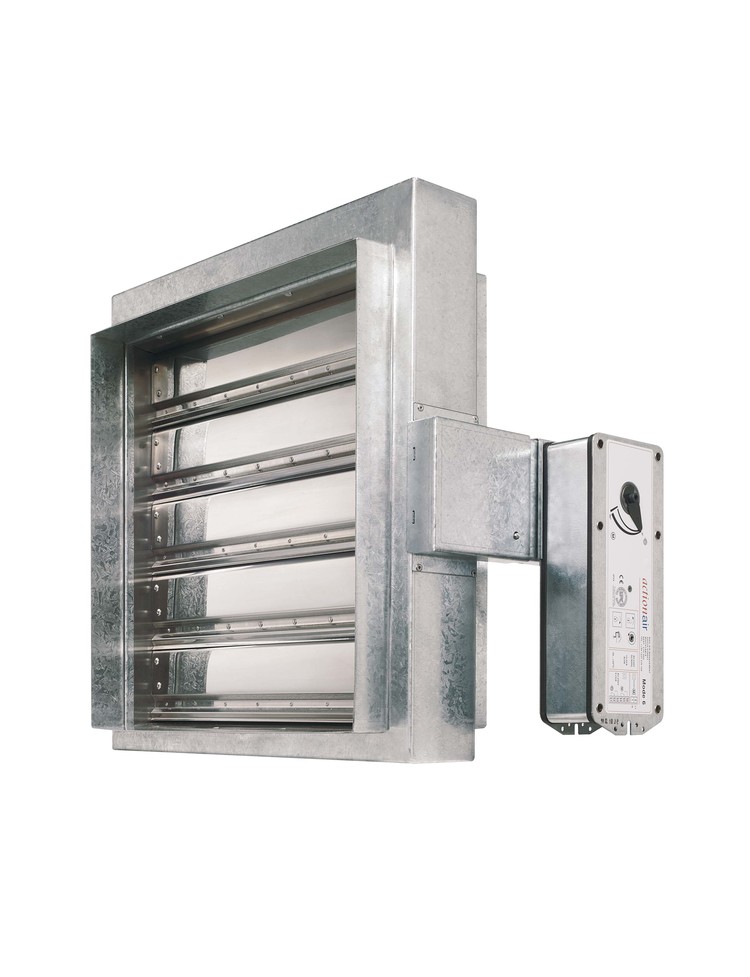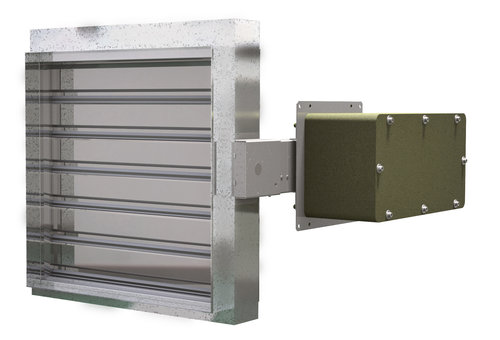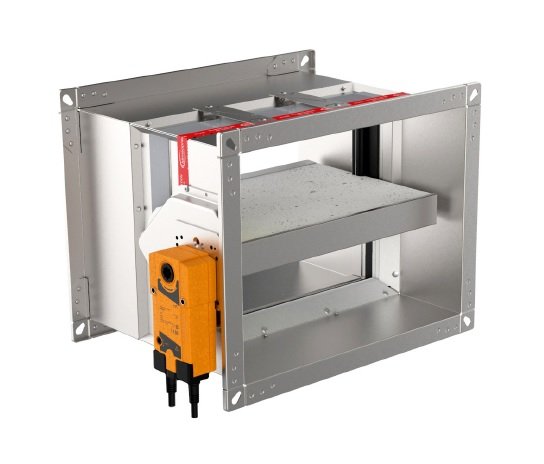Effective fire protection plans include detection , suppression, containment and clearance. Compartmentalisation is used to inhibit the spread of fire and smoke in a building with fire rated separations such as fire walls and fire and smoke barriers and partitions. When penetrating these walls or barriers with ventilation duct, the integrity of their ratings are sustained by the use of fire dampers, smoke dampers or combination fire/smoke dampers. It's important to note that different damper types perform different functions and are tested, installed, operated and maintained differently as well. The common types of dampers we see in the Irish market are:
Fusible Link or Manual Fire dampers:
Close in response to local high temperature. No actuator and slam shut.
Primary function is to inhibit the passage of flame from one side of a fire rated separation to the other.
Tested to EN 1366-2
Motorised Fire Dampers:
Close in response to local high temperature, smoke detection or direction from control system / fire alarm. Fail-safe close actuator.
Primary function is to inhibit the passage of smoke and flame from one side of a fire rated separation to the other.
Tested to EN 1366-2
Motorised Smoke Control Dampers:
Open or close in response to control system, predetermined cause & effect strategy or manual override. No fail-safe actuator.
Primary function is to resist and / or control the passage of smoke.
Tested to EN 1366-10
As of from 1st July 2013 Fire dampers must be CE marked and fall under the remit of European law, product standard EN 15650:2010 - (more detailed information on damper testing and criteria can be found here - link to Safegard Damper Guide).
Knowledge of the differences between each type is imperative to the proper application of the dampers and their performance in the life safety system. The installation of life safety dampers should be in accordance with the manufactures instructions as tested to relevant CE standards. Installation instructions provided by a manufacturer should not be used to install the dampers of a different manufacturer as they may not have been tested to the specific installation. It is worth noting that it is the responsibility and role of the installer to sign-off that their installation is compliant as per CE along with local market requirements applicable good guidance.
Safegard Systems design and supply systems to protect buildings and the occupants in the event of fire. Solutions are designed and supplied with the user in mind, providing innovative approaches that offer simple means of installation, operation and maintenance. If you would like to Learn more about dampers or damper control system you can enrol in one of our free CPD accredited training sessions here







